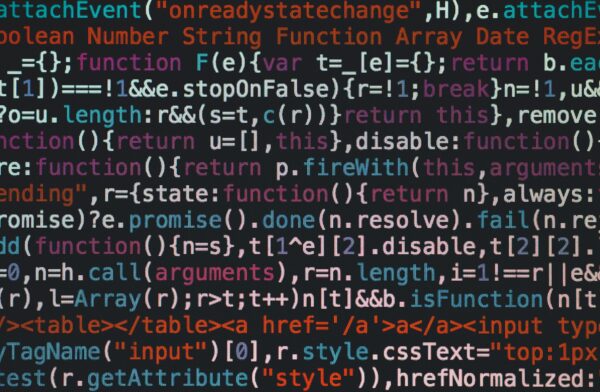In an interview with Forbes last September, Tim Cook, CEO of Apple, shared his perspective on AI: “We’ve been working on generative AI for years and have done a lot of research. And we’re going to approach it really thoughtfully and think about it deeply, because we’re fully aware of the not-good uses it can have…we’ve never felt an urgency to be first, we’ve always felt an urgency to be best, and that is how we go into this as well.”
If the CEO of Apple is taking such care in his approach to AI, we should follow his example. Rather than rushing to follow the trend, we must follow a thoughtfully designed pathway as we bring AI into hiring. With a methodical approach, we can continue to ensure AI’s quality, inclusivity, and effectiveness.
As you develop processes for AI implementation in your own workplace, consider following these steps:
- Define your goals
- Know the risks
- Establish guidelines
- Consider compliance
- Ensure quality
- Prioritize inclusion
- Train your team
- Monitor systems
Keep reading to learn more about each.
Why do we need a process for AI integration?
AI is exciting, but there are potential issues that should be addressed before we rely too heavily on a still-developing technology. We can’t use AI to maximize the potential of our hiring teams if it’s helping people make faster, but worse, decisions. If it’s helping some, while unfairly disadvantaging others. If it’s analyzing data, but that data isn’t protected. And it serves no one to streamline communication only to spread offensive, inaccurate, or plagiarized content.
To take advantage of the good of AI while mitigating the harms, we need to integrate AI systematically and mindfully. With a thorough step-by-step process that educates users, encourages human oversight, and prioritizes inclusion, we can go confidently into the future of hiring with AI on our side.
The path to using AI in your organization
When it comes time to incorporate AI into your hiring team’s workflow, build a culture of users who know how to navigate both the positives and negatives. Step-by-step, your organization can integrate AI in a way that optimizes success for all and mitigates potential harms.
Define your goals
First, decide where you might need AI to support your hiring processes. Don’t waste time or energy pursuing AI that isn’t a priority. For example, if you need help drafting outreach messaging, focus on tools that can automate personalized emails, and put AI-powered scheduling tools to the side for now. If you have a firm understanding of what you want to achieve, it will be easier to incorporate the right technology and accurately measure success.
Know the risks
Understand the potential pitfalls of your chosen AI tools so that you can put safeguards in place. Data privacy and security are often concerns—when considering AI vendors, ask what protections or certifications they have, or how they maintain data security. Additionally, be sure to address any employee concerns about job displacement. Maintain trust and transparency as you adjust your processes. And don’t forget that AI built on biased data will result in biased outcomes. Use technology and vendors that work with inclusive and accurate data sets.
Establish guidelines
Before using AI at your company, set down policies and guidelines that users can follow. Outline any required education, who will or will not have access to the tools, and clear pathways for addressing issues. When using AI to support decision-making in hiring, decide whether AI can be used for screening, preliminary suggestions, or final decisions. Consider developing a policy that commits your company to the ethical use of AI.
Consider compliance
There are AI-related laws in several states, countries, and the EU. In the US, laws directly related to AI and hiring exist in Illinois, Maryland, and New York City. As technology develops, the law will continue to evolve, so keep tabs on your local regulations to ensure compliance. Be sure to stay compliant with the Americans with Disabilities Act (ADA), too. Some tools may unintentionally screen out employees with disabilities—for example, a tool that measures keystrokes per minute as a productivity metric might be discriminatory against employees with vision impairments.
Ensure quality
As you program your AI algorithms, be careful to only include accurate, up-to-date, and unbiased data sets. If you remember Amazon’s early use of AI, they trained their tool to prefer male applicants and screen all other job seekers out. Don’t make the same mistake. Collaborate with data experts, engage a diverse team of developers, and perform regular audits to ensure the ongoing integrity of your data.
Prioritize inclusion
Embed equity and inclusion into your AI processes from the ground up. Use well-designed algorithms that reduce bias and support objective hiring decisions, like those that evaluate applicants based on abilities, rather than personal details. Take advantage of AI that analyzes data such as pay, hiring demographics, or promotion patterns to promote equitable hiring. When choosing AI tools for your workplace, engage platforms that also serve employees who need accommodations, such as tools that provide transcriptions or voice-to-text capabilities.
Train your team
As the saying goes: knowledge is power. Empower your teams to become smarter consumers of AI and recognize both its strengths and limitations. Encourage them to maintain oversight and intervene when they notice bias or inaccuracy. Prepare employees for the future by upskilling them on AI use, best practices, and ethical management. Above all, reinforce that AI is a supplement to their hiring processes and objective decision-making, not a replacement for critical thinking.
Monitor your systems
Measure the success of your AI tools against the goals you set. If you aren’t meeting objectives—if your time-to-hire hasn’t improved or the quality of your applicants hasn’t changed—make adjustments. Evaluate your data sets or explore new AI platforms. And perform regular spot tests for accuracy, bias, and usability. Along the way, gather feedback from users so that your processes continue to improve.
Going forward with AI and a plan
Whether you’re just getting started with recruiting automation or managing the AI-powered processes you already have, it’s important to thoughtfully consider your use of AI. Applications for AI are only going to increase, so having a strategy for how to meet the future is essential. Connect with our intelligent hiring experts to talk more about the possibilities of AI and hiring at your company.


